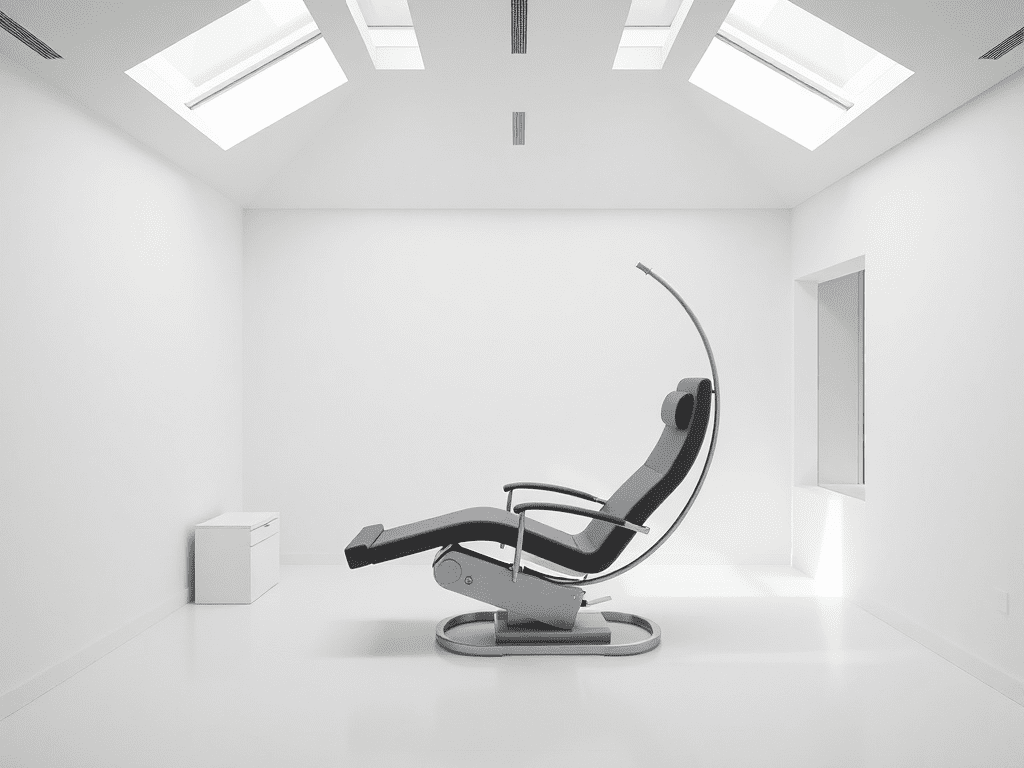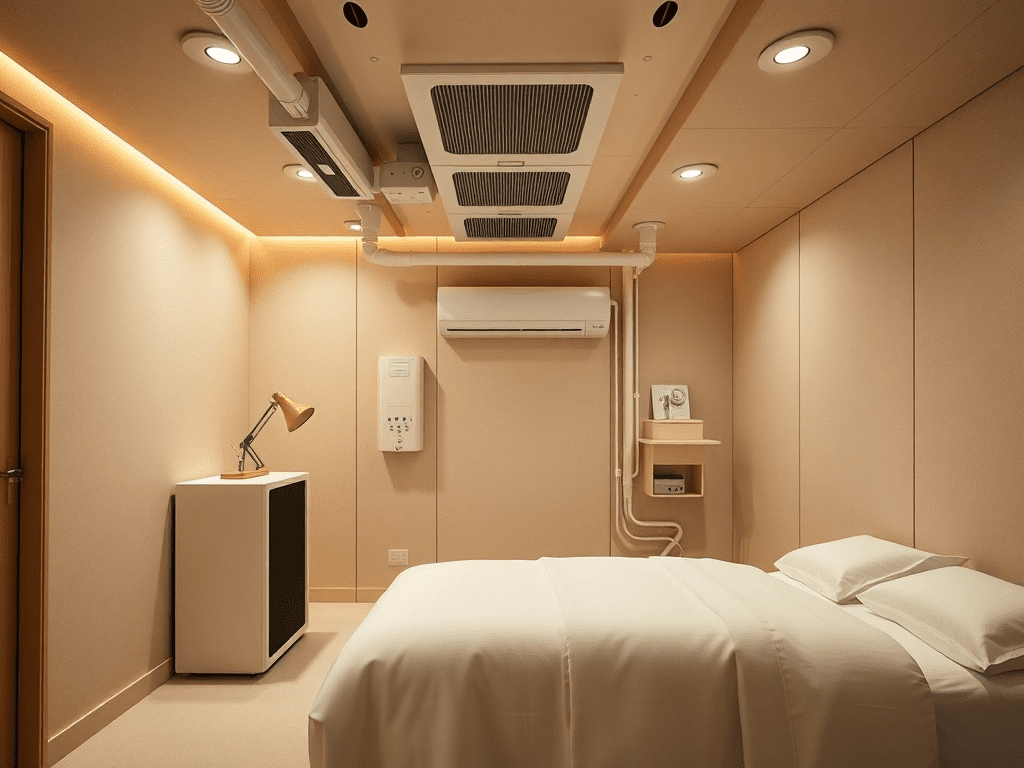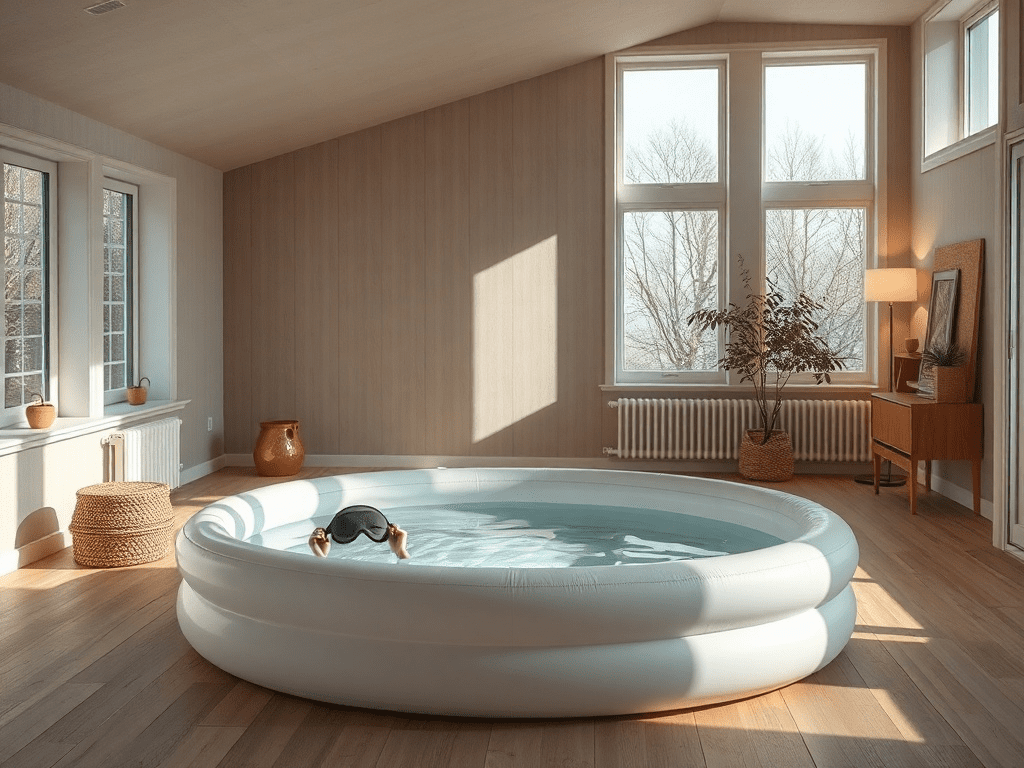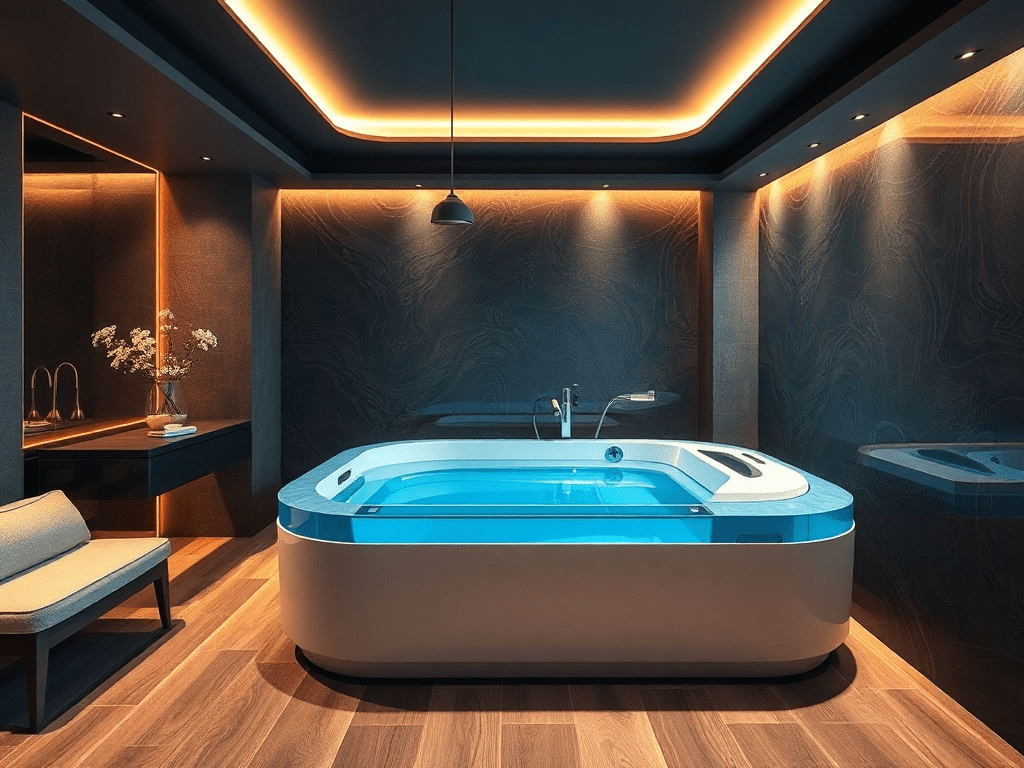Step into a realm of tranquility with sensory deprivation room design ideas, where silence amplifies inner peace and darkness illuminates self-discovery. These sanctuaries offer respite from the cacophony of modern life, providing a unique space to recalibrate and reconnect with oneself. Whether you’re seeking anxiety relief, enhanced meditation, or simply a profound sense of relaxation, exploring sensory deprivation room design ideas can unlock a new dimension of well-being.
What are the Benefits of Sensory Deprivation Room Design Ideas?
The allure of sensory deprivation lies in its ability to minimize external stimuli, allowing the mind to wander freely and the body to deeply relax. Users often report reduced stress and anxiety, improved sleep quality, and heightened creativity. Some studies even suggest benefits for chronic pain management and enhanced athletic performance [i].

Key Elements of Sensory Deprivation Room Design Ideas
Creating an effective sensory deprivation environment requires careful consideration of several key elements, each playing a crucial role in minimizing external stimuli. These include soundproofing, light blocking, temperature control, and air quality management.
Soundproofing: Creating a Silent Sanctuary
Effective soundproofing is paramount. Walls, ceilings, and floors should be treated with materials like acoustic panels, mass-loaded vinyl, and soundproof insulation. Double or even triple-paned windows are essential, and doors should be tightly sealed to prevent any sound leakage. Consider using soundproof curtains or blankets for additional noise reduction. According to a study by Acoustical Surfaces, layering different soundproofing materials is the most effective approach.
Light Blocking: Embracing Complete Darkness
Total darkness is equally crucial. Use blackout curtains, window films, or even board up windows entirely. Pay close attention to light leaks around doors and windows, sealing any cracks with weather stripping or caulk. Inside the room, use black paint or dark-colored, non-reflective materials to absorb any residual light. This is important for relaxation therapy and maximizing the effect of sensory deprivation room design ideas for anxiety relief.
Temperature and Humidity Control: Maintaining a Comfortable Environment
Maintaining a consistent and comfortable temperature is vital for relaxation. Aim for a neutral temperature, typically between 75-82°F (24-28°C). A dehumidifier or humidifier can help regulate humidity levels, preventing the room from becoming too damp or too dry. Some modern sensory deprivation room design ideas even integrate climate control systems for optimal comfort. Proper ventilation is also important in sensory deprivation room design.

DIY Sensory Deprivation Room Design Ideas at Home
Creating a sensory deprivation room at home is achievable, even on a budget. Start by identifying a small, quiet room with minimal windows. Focus on soundproofing the door and windows using heavy curtains, blankets, or soundproof foam. Block out all light sources with blackout curtains and seal any light leaks. Consider using a white noise machine or earplugs for additional sound reduction. A simple sensory deprivation room design might be all you need to practice sensory deprivation room design ideas for meditation.
Affordable Sensory Deprivation Room Design Ideas on a Budget
While professional sensory deprivation tanks can be expensive, there are many affordable ways to create a similar experience at home. Instead of building a dedicated room, consider using a large, inflatable pool or tub filled with warm water and Epsom salts for a floatation experience. Invest in a good quality eye mask and earplugs to block out light and sound. Focus on creating a calm and relaxing atmosphere with soft lighting, comfortable blankets, and aromatherapy. Remember, the goal is to minimize external stimuli and create a safe and comfortable space for relaxation. According to Floatation Locations, you can minimize the cost of a sensory deprivation room [ii].

Sensory Deprivation Room Design Ideas with Float Tank
For a more immersive experience, incorporate a float tank into your sensory deprivation room design. These tanks are filled with highly concentrated Epsom salt water, allowing you to float effortlessly and experience a profound sense of weightlessness. Float tanks can significantly enhance the benefits of sensory deprivation, promoting deep relaxation, stress reduction, and mental clarity. Consider integrating soft, ambient lighting and calming music into your float tank sessions for an even more immersive experience. This is a great way to upgrade your sensory deprivation room design ideas with soundproofing.
What Materials Should I Use for Sensory Deprivation Room Design Ideas?
Choosing the right materials is essential for creating an effective and comfortable sensory deprivation environment. For soundproofing, consider using acoustic panels, mass-loaded vinyl, and soundproof insulation. For light blocking, opt for blackout curtains, window films, and dark-colored, non-reflective paint. For temperature control, use a dehumidifier or humidifier to regulate humidity levels. Ensure all materials are non-toxic, hypoallergenic, and easy to clean.
FAQ: Your Questions About Sensory Deprivation Room Design Ideas Answered
What are the key design considerations for a sensory deprivation room?
Key design considerations include soundproofing, light blocking, temperature control, air quality, and safety. The goal is to create a completely controlled environment that minimizes external stimuli and promotes relaxation.
What materials are best for soundproofing a sensory deprivation room?
Effective soundproofing materials include acoustic panels, mass-loaded vinyl, soundproof insulation, and double or triple-paned windows. Layering different materials is often the most effective approach.
How do you control light and temperature in a sensory deprivation room design?
Control light with blackout curtains, window films, and dark-colored, non-reflective paint. Seal any light leaks around doors and windows. Control temperature with a thermostat, dehumidifier, or humidifier.
What are the safety requirements for a sensory deprivation room?
Safety requirements include proper ventilation, non-toxic materials, and easy access in case of emergency. Consider installing a panic button or intercom system for added safety. As noted by the FDA, you should always consult with your doctor before undertaking any new health treatments [iii].
Can I build a sensory deprivation room design on a budget?
Yes, it is possible to build a sensory deprivation room on a budget by focusing on simple, affordable solutions like blackout curtains, blankets, and earplugs. You can find these at your local hardware store.
What are some effective sensory deprivation room design ideas to minimize external stimuli?
Effective ideas include soundproofing walls, blocking out all light sources, maintaining a comfortable temperature, and using a white noise machine or earplugs.
How important is ventilation in a sensory deprivation room design?
Ventilation is crucial for maintaining air quality and preventing the room from becoming stuffy or uncomfortable. Consider installing an air purifier or ventilation system to ensure proper airflow.
Modern Sensory Deprivation Room Design Ideas
Modern designs often incorporate smart home technology to control lighting, temperature, and sound with ease. Minimalist aesthetics, clean lines, and neutral color palettes create a calming and uncluttered environment. Some designs even feature integrated aromatherapy systems to enhance the sensory deprivation experience. These modern features make it easier to achieve ideal conditions for sensory deprivation room design ideas.
The Future of Sensory Deprivation
As we navigate an increasingly chaotic world, the need for spaces of tranquility and self-reflection will only continue to grow. Sensory deprivation rooms offer a unique and powerful tool for stress reduction, mental clarity, and personal growth. Whether you choose to invest in a professional float tank or create a simple sanctuary at home, the benefits of sensory deprivation are within reach.
Explore sensory deprivation room design ideas to unlock a world of inner peace and well-being. Consider the benefits and cost to determine the best sensory deprivation room design ideas for you.

Disclaimer: Consult with a healthcare professional before using sensory deprivation for therapeutic purposes.
[i] Source: National Institutes of Health
[ii] Source: Floatation Locations
[iii] Source: FDA

